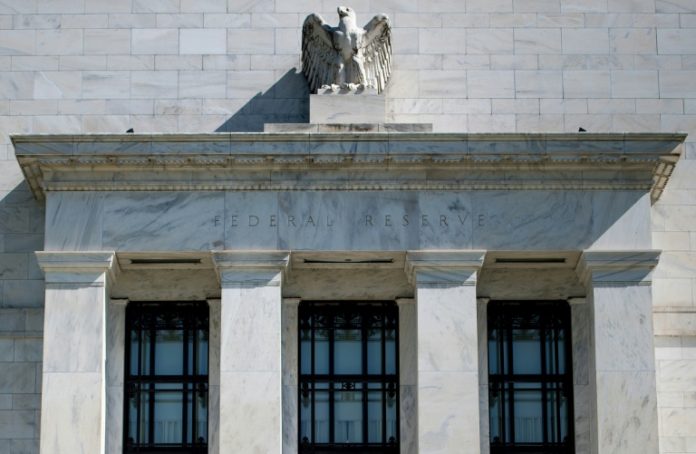The US Federal Reserve cut its benchmark interest rate for the third straight time on Wednesday but is likely to hold off before providing more stimulus as it gauges economic risks.
Though President Donald Trump’s trade war with China and Brexit concerns have created uncertainties that have crimped business investment and undermined manufacturing, the American economy has remained “resilient,” and monetary policy is now “in a good place,” Fed Chairman Jerome Powell said.
The Fed’s policy-setting Federal Open Market Committee lowered the policy interest rate by 25 basis points to a target range of 1.5-1.75 percent, as expected, pulling back another of the four interest rate increases it implemented in 2018.
“We took this step to help keep the US economy strong in the face of global developments, and to provide some insurance against ongoing risks,” Powell told reporters.
Added to a key change in the language of the statement issued by the policy-setting Federal Open Market Committee, the comments cement the view the Fed is for now unlikely to cut rates again in the final meeting of the year.
Pressed to explain under what conditions policymakers would consider another dose of stimulus as appropriate, Powell said, “if developments emerge that cause a material reassessment of our outlook, we would respond accordingly.”
He pointed to trade tensions and Brexit as factors crimping business investment and manufacturing but “overall we see the economy as having been resilient to the winds that have been blowing this year.”
Given signs of a possible “phase one” trade deal with China and the diminished risk of a no-deal Brexit, “there is plenty of risk left but I would have to say the risks seem to have subsided.”
In a key edit to the prior statement, the Fed removed the pledge to “act as appropriate to sustain the expansion.”
Analysts who scrutinize every phrase the Fed utters read that as a leaving the door open to a pause in the easing cycle.
“In other words, they think they have done enough for now and that further easings will be contingent on a material weakening in growth and/or inflation,” said Ian Shepherdson of Pantheon Macroeconomics.
As President Donald Trump’s trade war with China has hit manufacturing and created uncertainty that, together with concerns about Brexit, have slammed the brakes on investment, economists expected this move to help bolster a softening American economy.
But GDP in the July-September quarter was surprisingly solid, growing 1.9 percent, boosted by a strong housing sector and healthy consumer spending, according to data released earlier Wednesday.
US hiring continues and unemployment is low, while inflation is creeping up to the Fed’s 2.0 percent target.
However, the trade war uncertainty also has hit the global economy, and the US data contained concerning signs as well, even as American consumers continue to carry the weight of the expansion on their backs.
Several recent surveys show about a third of economists believe the US economy could slip into recession in the next 12 months. All show the number has increased in recent weeks.
Esther George, head of the Kansas City Federal Reserve Bank, and Boston’s Eric Rosengren both opposed the latest move, just as they voted against the previous two rate cuts.
Wall Street was cheered by Powell’s remarks, with the S&P 500 swinging to a record close. Analysts said the Fed’s messaging matched investor expectations.












